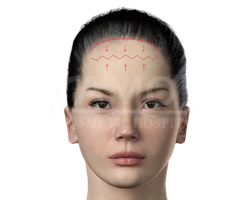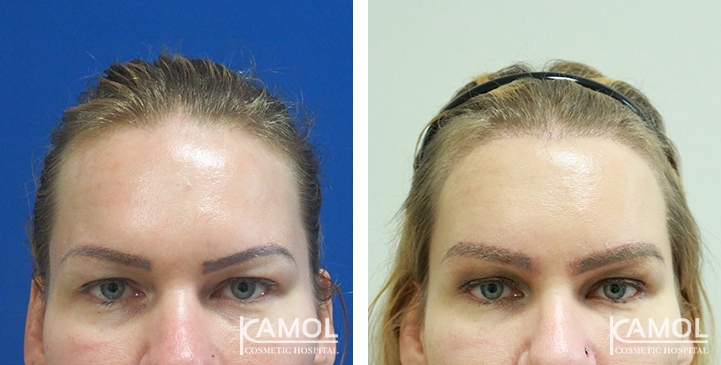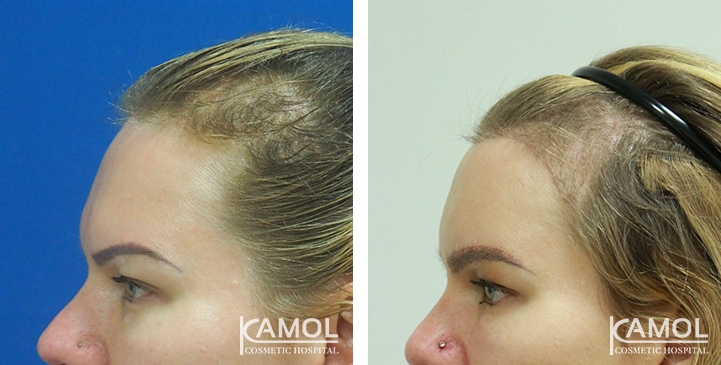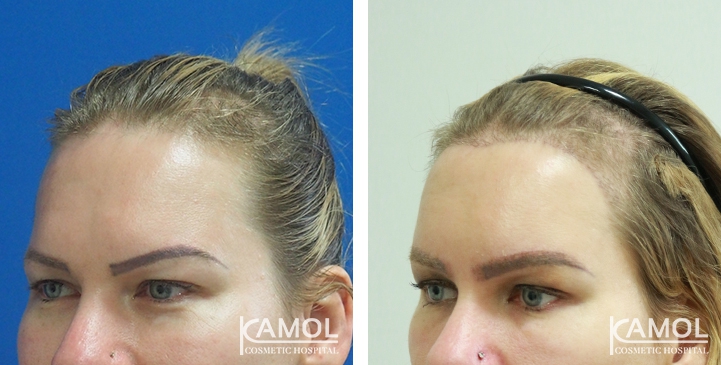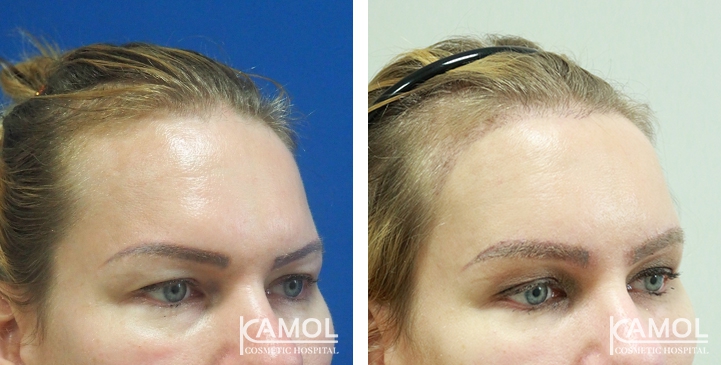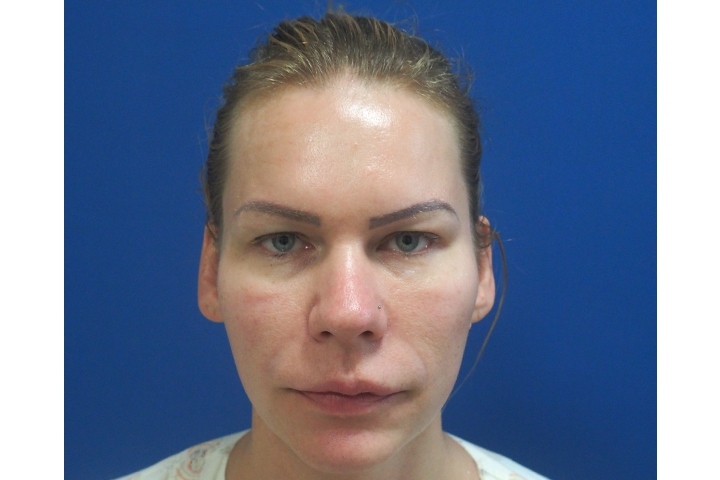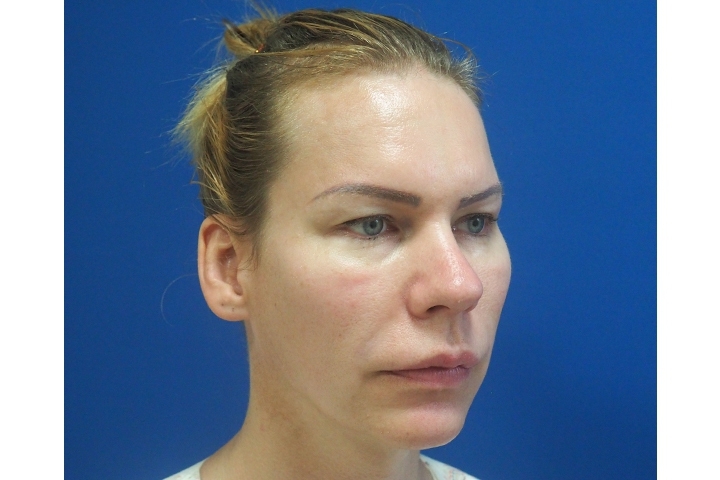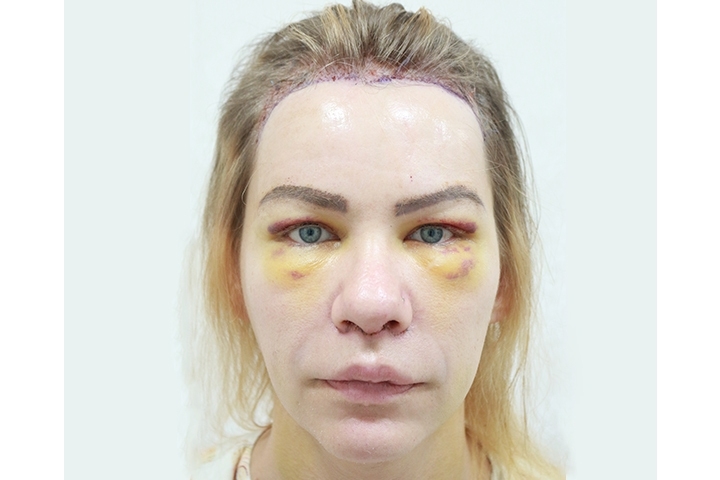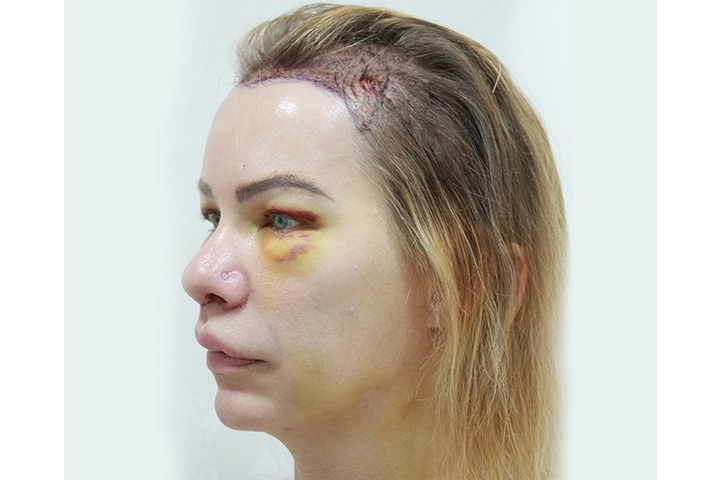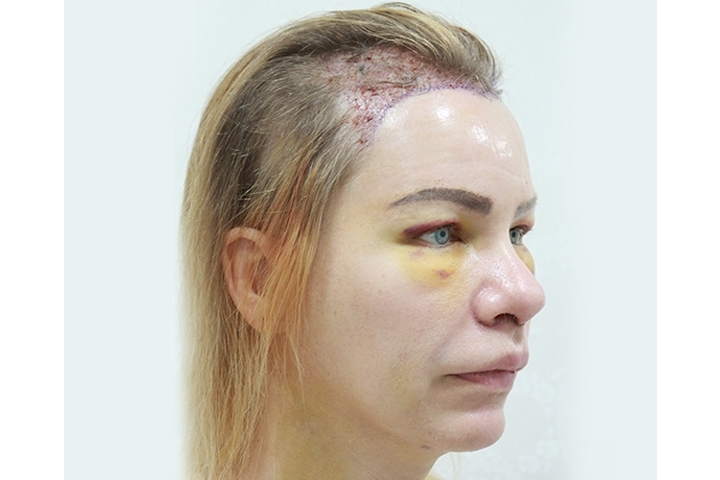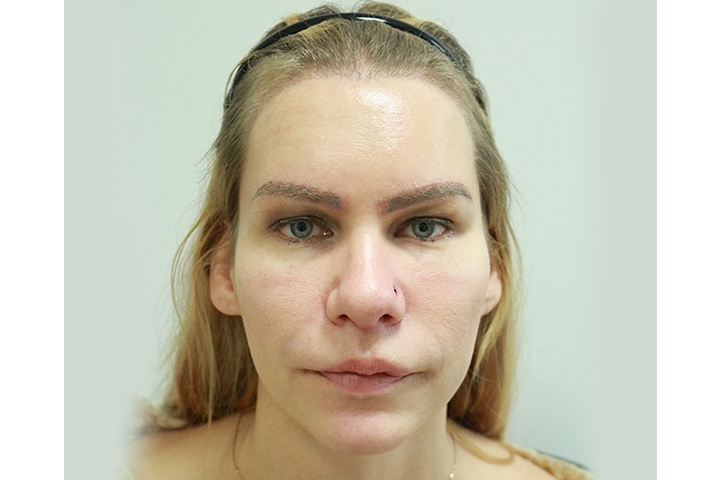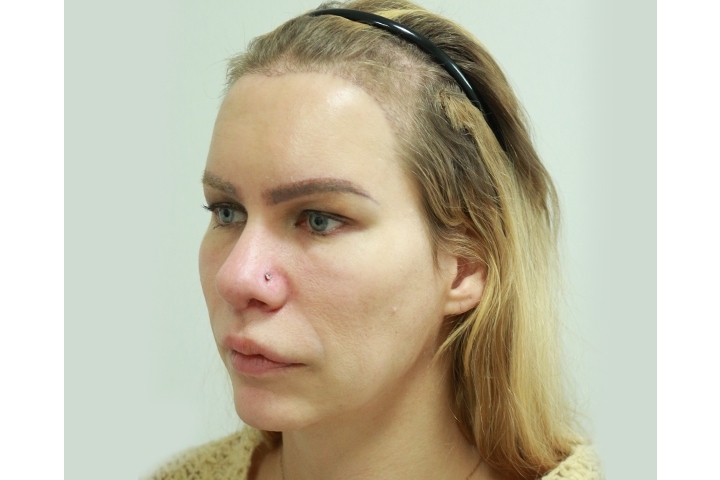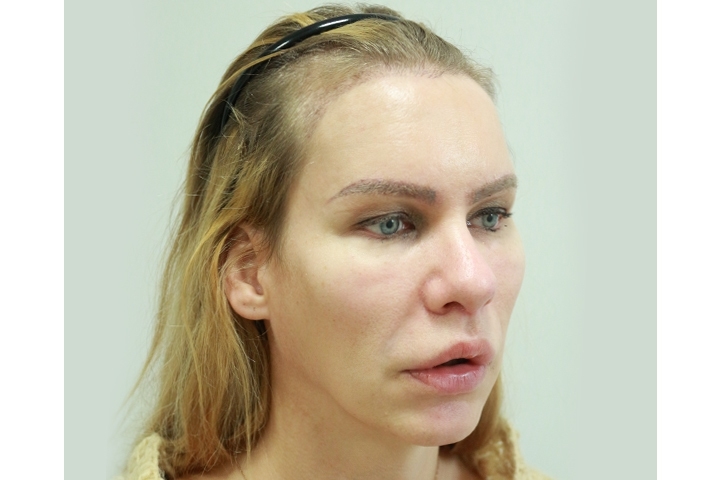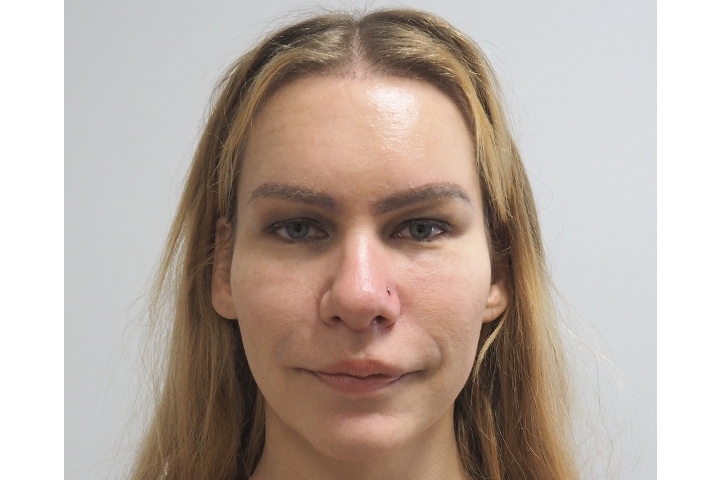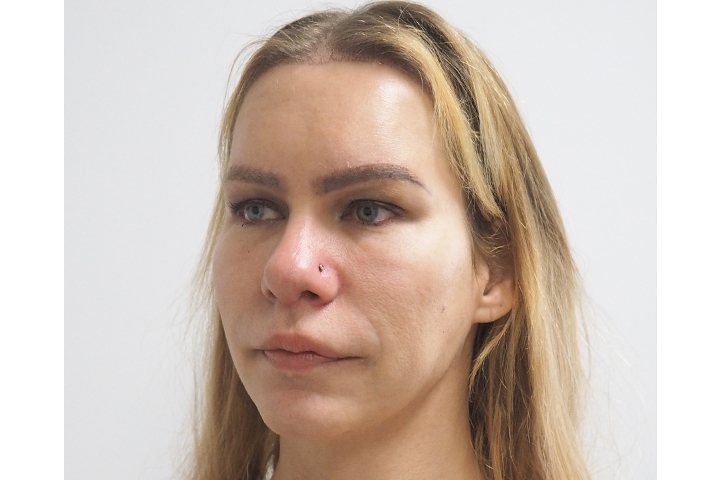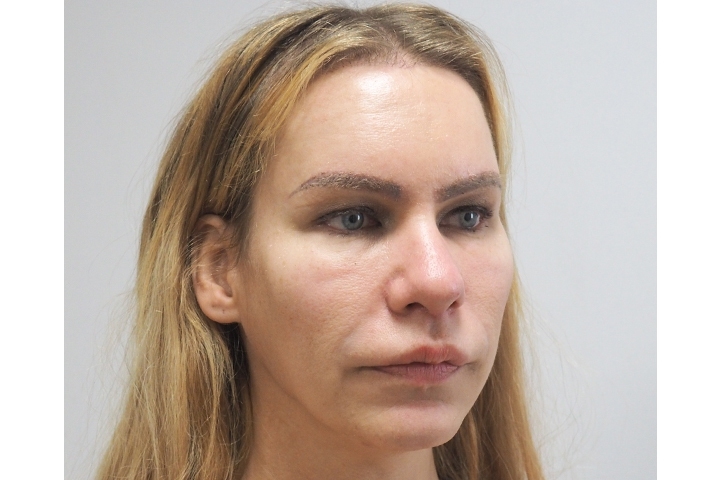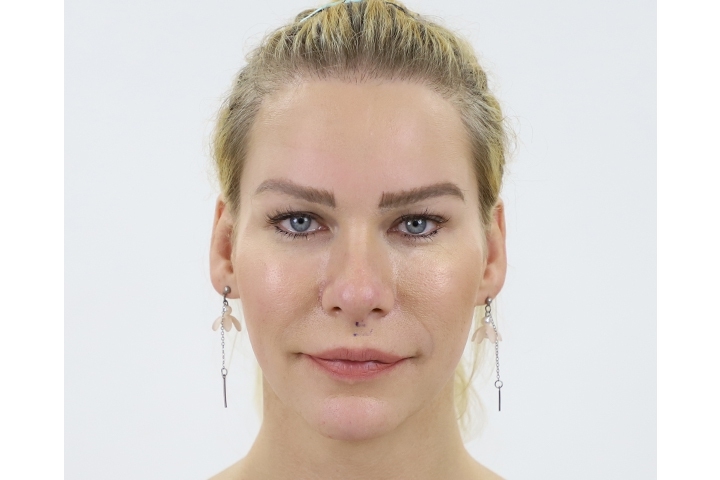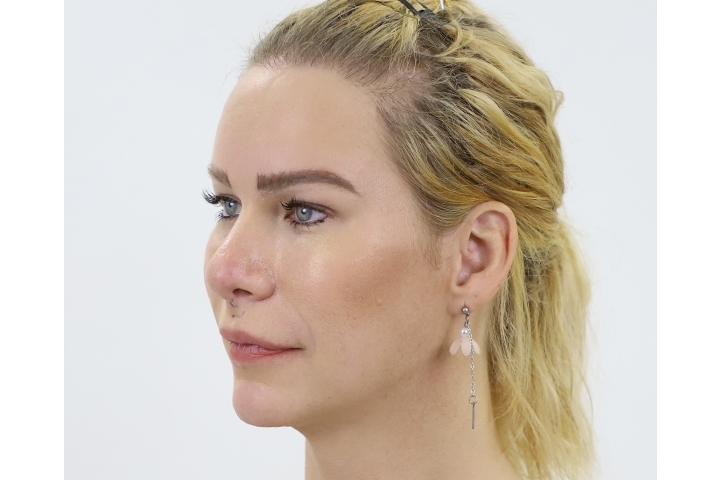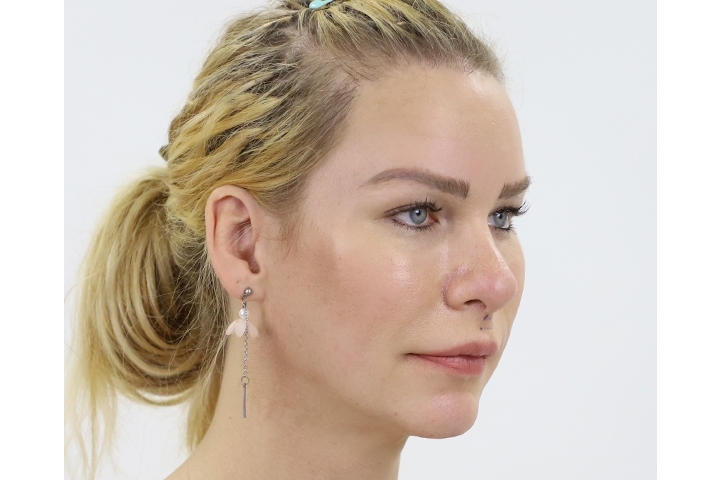Hairline Lowering Surgery / Scalp Advancement / Forehead Reduction
The broad forehead is often an undesirable trait that causes a feeling of self-consciousness and dissatisfaction. One of the correcting techniques that we offer is a hairline lowering or forehead reduction procedure. This procedure can reduce the look of a wide forehead, restoring balance and improve overall facial symmetry.
A Good Candidate for Hairline lowering
- Man or woman with a naturally high hairline, receding hairline unhappy with their forehead
- A broad forehead and wants to shorten the forehead
- Low or heavy eyebrows and want to change the proportion of your face
- Healthy
- Realistic expectation
- Know the risk of the procedure well
Preparation for hairline lowering
- Consult with the plastic surgeon who has highly skilled and experienced for hairline lowering. You will discuss your surgical goals, medical condition, and treatments
- Physical examination, including a blood test, chest X-ray, electrolytes level, HIV
- Stop smoking and drinking alcohol at least one week before surgery
- Avoid taking aspirin, anti-inflammatory drugs, and herbal supplements as they can increase bleeding and bruising at least two weeks
- Stop eating and drinking at least 6 hours before surgery
|
Figure 1: Shows the hairline lowering incision |
Figure 2: Shows the hairline lowering scar |
Hairline Lowering Procedure:
- Hairline lowering is an operation performed under general anesthesia
- An incision is made at the hairline and extends into the temporal area within the hair-bearing region. The scalp advance through this incision, The excess forehead skin is then removed, and the hairline place in a new lowered position. In most cases, the hairline can be reduced by about 1/2 to 1 inch in a single procedure
- The skin is suture together in a way that minimizes scar formation and is hidden almost entirely by the hairline upon hair regrowth
The operation time is around 2 hours.
Post-operative care for hairline lowering
- Stitches remove in one week
- Keep the head elevated for 1-2 weeks after surgery to reduce post-op swelling
- To control pain, swelling in your face by medication
- Most patients can wash their hair the next day and go back to work in a few days after the operation
- In some cases, a follow-up hair transplant recommends to lower the hairline further and cover the hairline scar
- Follow all post-operative instructions and attend all post-operative appointments
Risk and Complications for hairline lowering:
- Scarring after the incision heals
- Bleeding
- Infection
- Adverse reaction to anesthesia
- Suture rupture along an incision line
- Hematoma
- Dissatisfaction with appearance after surgery
- Facial nerve injury
- Hair loss around incision scar
If an experienced, skilled professional performs the surgery, the risk of a visible scar and long-term effects is a minimum.
Result for hairline lowering
Hairline lowering will pull down hairline around 1.5-2 centimeters. Make your forehead more narrow 1.5-2 cm. Your face will be more balanced of Hairline lowering and Hair transplant.
If you have a broad forehead that prefers to reduce much more than 3 cm, you cannot perform only hairline lowering. Another alternative procedure might be hair transplantation. Kamol Cosmetic Hospital offers a combination of hairline lowering and hair transplant.
The limitation of hairline lowering is as follows:
- The maximum of pull-down is approximately 2 cm. Maybe not enough for some patients' needs
- Hairline lowering surgery will have a scar on the edge of the hairline
- Some people with dark skin are more noticeable shedding color on incision scar
- Hairline lowering cannot create a beautiful facial frame
The limitation of hair transplant is as follows:
- It may take a year to see the complete result
- The operation time of a hair transplant takes many hours on local anesthesia, and they will feel uncomfortable during the operation
- The number of hair grafts is not more than 4,000 grafts each time. It can reduce the forehead width around 1.5-2 cm, depends on the hair graft density
The advantage of the combination of hairline lowering and the hair transplant is as follows:
- The combination of hairline lowering and hair transplant can help from the limitation of each technique as well. This combination surgery will reduce the forehead width successfully much more than 3.5 cm.
- Sometimes, the hairline lowering cannot pull down to cover the bald side
- A hair transplant will full fill the hairless area
- A hair transplant can design the facial frame to be a feminine or masculine hairline. Make your face is a more natural look
Getting to Know for Hairline Lowering Surgery / Scalp Advancement / Forehead Reduction
Why Hairline is a part of Feminine Face
Why Hairline is a part of Feminine Face
Why people need Hairline Lowering
Why people need Hairline Lowering
Feminine Hairline
Feminine Hairline
Before & After for Hairline Lowering Surgery / Scalp Advancement / Forehead Reduction
Reviews Hairline Lowering Surgery / Scalp Advancement / Forehead Reduction
Video: Hairline Lowering Surgery / Scalp Advancement / Forehead Reduction
Why both Hairline Lowering and Hair Transplantation Procedures are needed for some people?
Hairline lowering, also known as forehead reduction or hairline advancement, is a surgical procedure that is performed to lower the hairline by removing a strip of skin from the forehead. This procedure is typically done in conjunction with a hair transplant to create a natural-looking hairline and to fill in any bald or thinning areas.
Some people may require hairline lowering in addition to a hair transplant due to a high forehead or a naturally high hairline that they wish to lower for cosmetic reasons. In some cases, individuals may have had previous hair loss or balding that resulted in a receding hairline, and they want to restore a more youthful and natural hairline. Additionally, some people may have had a previous hair transplant procedure that did not achieve the desired results, and so they opt for hairline lowering to correct any issues and achieve a more satisfactory outcome.
What are the reasons for undergoing a Hairline Lowering Surgery?
Some of the common reasons why people may choose to undergo hairline lowering surgery include:
- Aesthetics: A high hairline can be considered unattractive and can be a source of self-consciousness for some people. Lowering the hairline can create a more balanced and aesthetically pleasing appearance.
- Genetics: Some people are born with a high hairline that is considered to be genetic. Hairline lowering surgery can help to correct this condition.
- Previous surgical mistakes: In some cases, a high hairline may be the result of a previous hair transplant or other surgical procedure. Hairline lowering surgery can be used to correct the problem and create a more natural-looking hairline.
- High forehead: A high forehead can make the face appear disproportionate. Hairline lowering surgery can reduce the size of the forehead and create a more balanced appearance.
- Correction of a receded hairline: A receded hairline can be corrected with hair transplant surgery and hairline lowering can give a more natural look to the transplanted hair.
It's important to note that hairline lowering surgery is a serious procedure and should not be considered lightly. It is important to have realistic expectations about the results of the surgery and to consult with a qualified surgeon who has experience in this type of procedure.
What are the techniques used in Hairline Lowering Surgery? And what are they for Hair Transplant Surgery?
Hairline lowering surgery is performed using one of two main techniques:
- The Coronal Incision technique - In this method, a strip of skin is removed from the forehead, and the hair-bearing scalp is moved forward to fill the gap. This technique is best suited for people who have a high forehead or a receding hairline.
- The Trichophytic Forehead Lift technique - This method is similar to the coronal incision technique, but the incision is made at the hairline, rather than on the forehead. This technique is less invasive and allows for a more natural-looking hairline.
In Hair transplant surgery, there are two main techniques:
- Follicular Unit Transplantation (FUT) - In this method, a strip of skin is removed from the back of the head (the donor area) and the individual hair follicles are harvested and transplanted to the balding or thinning areas (the recipient area).
- Follicular Unit Extraction (FUE) - This method involves removing individual hair follicles from the donor area using a specialized tool and transplanting them to the recipient area. This method is less invasive and allows for faster healing, but it is also more time-consuming and can be more expensive.
Both techniques are performed under local anesthesia, and with the help of a team of surgeon and nurses, the procedure is done. Both techniques have their own advantages and disadvantages, and the choice of technique will depend on the individual's specific needs and goals.


